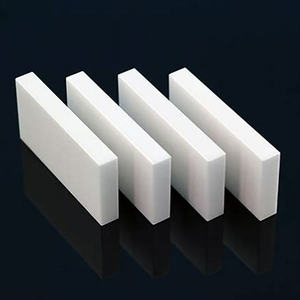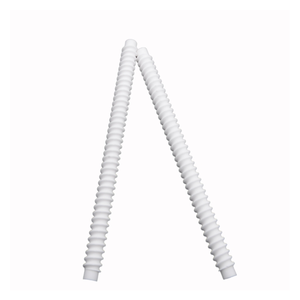Professional industry ceramic supplier, silicon nitride, silicon carbide, aluminum nitride and any other kinds of ceramics.
PRODUCT PARAMETERS
Description
Overview of High Hardness Alumina Ceramic Parts Aluminum Oxide Chemical Stability Ceramic Shaft
High Hardness Alumina Ceramic Parts Aluminum Oxide Chemical Stability Ceramic Shaft are one of the most widely used and versatile technical ceramics, prized for their excellent combination of properties. Composed primarily of aluminum oxide (Al₂O₃), they offer outstanding hardness, wear resistance, and electrical insulation, even at high temperatures. From low-purity grades for general industrial use to high-purity compositions for demanding applications, alumina ceramics provide a cost-effective and reliable solution across a vast range of industries.
Features of High Hardness Alumina Ceramic Parts Aluminum Oxide Chemical Stability Ceramic Shaft
-
High Hardness & Wear Resistance: Excellent resistance to abrasive wear, making it ideal for liners, nozzles, and guides.
-
Superior Electrical Insulation: Maintains high electrical resistivity and dielectric strength, even at elevated temperatures.
-
Excellent Thermal Stability: Withstands high operating temperatures and exhibits good thermal conductivity.
-
High Mechanical Strength: Possesses good compressive strength and stiffness.
-
Chemical Inertness: Resists corrosion from a wide range of acids, alkalis, and other harsh chemicals.
-
Cost-Effectiveness: A highly versatile and economically efficient ceramic material for numerous applications.
Specification of High Hardness Alumina Ceramic Parts Aluminum Oxide Chemical Stability Ceramic Shaft
High Hardness Alumina Ceramic Parts offer exceptional performance. These Aluminum Oxide components are incredibly tough. They resist wear extremely well. This makes them last much longer than metal parts. You find them perfect for demanding situations. Think high-abrasion areas or constant friction points.
The hardness is a key feature. Alumina ranks very high on the Mohs scale. Only diamond is harder. This hardness directly fights wear. Parts keep their shape and size. Precision stays constant over time. This is vital for shafts and bearings.
Chemical stability is another major advantage. Aluminum Oxide resists most chemicals. It handles acids well. It handles bases well too. Corrosion isn’t a problem. These parts work reliably in harsh chemical environments. Think chemical processing plants or labs. They won’t degrade or contaminate.
High temperature resistance matters. Alumina ceramic handles extreme heat. It performs well up to 1800°C. Thermal shock resistance is good. Sudden temperature changes won’t crack it easily. This suits furnaces, kilns, and hot processes.
Electrical insulation is inherent. Alumina does not conduct electricity. It isolates components effectively. This prevents short circuits. It adds safety in electrical applications.
Alumina Ceramic Shafts benefit from all these properties. They provide smooth rotation. They minimize friction. They require less lubrication. They withstand heavy loads. These shafts excel in pumps, valves, and precision machinery. They handle tough conditions metal parts cannot. Long service life reduces downtime and replacement costs.
Dimensional stability is excellent. Alumina parts change very little with temperature. They maintain tight tolerances. This ensures reliable operation and fit. Surface finishes can be very smooth. This further reduces friction and wear. Custom sizes and shapes are possible. Manufacturing adapts to specific needs.
The material purity affects performance. High-purity alumina offers the best properties. It ensures maximum hardness and chemical resistance. Lower purity grades exist for less demanding jobs. Choosing the right grade is important.
Applications of High Hardness Alumina Ceramic Parts Aluminum Oxide Chemical Stability Ceramic Shaft
High hardness alumina ceramic parts deliver excellent performance. Aluminum oxide ceramic is the key material here. This ceramic is extremely hard. It scores nine on the Mohs scale. This high hardness means parts resist scratching and abrasion very well. They last longer in tough conditions. Surfaces stay smooth even under heavy wear. This is vital for moving components.
Chemical stability is another major benefit. Aluminum oxide ceramic withstands many harsh chemicals. Acids and alkalis often don’t affect it. Strong solvents usually can’t damage it. This resistance prevents corrosion and degradation. Parts keep their strength and shape. They work reliably in corrosive settings. This includes chemical plants and labs.
These properties make alumina ceramic ideal for demanding shafts. Ceramic shafts benefit greatly from the hardness. They handle high loads without bending. Friction wears them down much slower than metal. This reduces maintenance needs. Their chemical stability is crucial too. Shafts stay intact in corrosive liquids or fumes. Performance doesn’t drop over time.
You find these ceramic shafts in tough jobs. They work well in chemical pumps and valves. They move corrosive fluids safely. Semiconductor manufacturing uses them heavily. Precision and purity are critical there. Food processing equipment employs them. They meet strict hygiene standards. High-temperature applications need them. Furnace rollers and thermocouple tubes are examples. Electrical devices use them for insulation. They don’t conduct electricity. Medical instruments rely on their inertness and smoothness.
Company Profile
Tanki New Materials Co.Ltd. focus on the research and development, production and sales of ceramic products, serving the electronics, ceramics, chemical and other industries. Since its establishment in 2015, the company has been committed to providing customers with the best products and services, and has become a leader in the industry through continuous technological innovation and strict quality management.
Our products includes but not limited to Aerogel, Aluminum Nitride, Aluminum Oxide, Boron Carbide, Boron Nitride, Ceramic Crucible, Ceramic Fiber, Quartz Product, Refractory Material, Silicon Carbide, Silicon Nitride, ect. please feel free to contact us.

Payment Methods
T/T, Western Union, Paypal, Credit Card etc.
Shipment Methods
By air, by sea, by express, as customers request.
5 FAQs of High Hardness Alumina Ceramic Parts Aluminum Oxide Chemical Stability Ceramic Shaft
High Hardness Alumina Ceramic Parts: Aluminum Oxide Chemical Stability Ceramic Shaft FAQs
Why use alumina ceramic for shafts? Alumina ceramic offers extreme hardness. This hardness gives excellent wear resistance. Shafts face constant friction. Alumina withstands this abrasive wear far longer than metals or plastics. This means less downtime for replacements.
Does alumina resist chemicals well? Yes, alumina ceramic possesses outstanding chemical stability. Aluminum oxide is inert. It resists attack from strong acids, strong bases, solvents, and other harsh chemicals. This makes it perfect for pumps, valves, and equipment handling corrosive fluids. The shaft material won’t degrade.
How hot can these ceramic shafts get? Alumina ceramic shafts handle very high temperatures. They maintain strength and dimensional stability well above 1000°C (1832°F). This exceeds the capability of most metals. They are ideal for high-temperature furnaces, kilns, and thermal processing equipment. They won’t warp or melt.
Does the shaft surface cause friction? No, alumina ceramic has a naturally smooth surface. This smoothness creates low friction. Low friction is crucial for rotating shafts. It reduces energy loss. It minimizes heat buildup. It also prevents excessive wear on mating parts like bearings or seals. This smoothness also prevents material buildup.
Is alumina ceramic an electrical insulator? Yes, alumina ceramic is an excellent electrical insulator. This property is vital in many applications. It prevents electrical currents from flowing through the shaft. This enhances safety. It prevents short circuits. It allows use in electrically sensitive environments. Metal shafts conduct electricity, alumina does not.
REQUEST A QUOTE
RELATED PRODUCTS
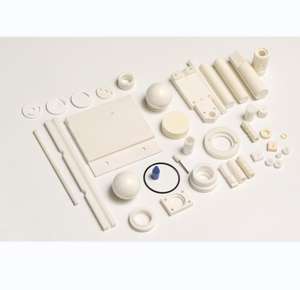
Customized Industrial Aluminum Oxide Ceramic Spacer

Aluminum Oxide Ceramic Target 99.99% Round Disc Customized Size

Industrial Custom Machining High Aluminum Oxide Ceramic Parts
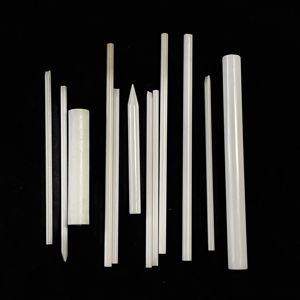
Zirconia Ceramic Gravel-Infused Aluminum Oxide Ceramic Basket Gemstone 38.1*25*23mm
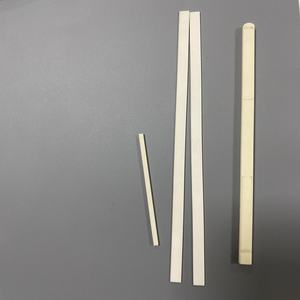
Thermal Resistant 96% 99.6% Aluminum Oxide Substrate Al2O3 Alumina Ceramic Plate
